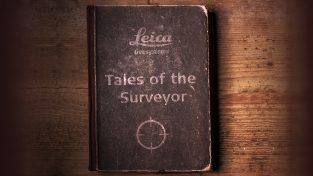Powerful 3D laser scanning technology provided by Hexagon’s Leica Geosystems is giving investigators a whole new method of evidence collection, preserving crime scenes as digital twins and providing an extensive dataset that can create a breakthrough in the toughest cases.
These days, we’re all used to the magical process of the procedural crime drama: supercomputers enhancing grainy photos, DNA samples pointing directly to a previously-unknown suspect, and the expert detectives who always seem to stumble upon the answer just in the nick of time. While exciting stories like this may be relegated (for now) to the realm of fiction, the powerful technology provided by Hexagon’s Leica Geosystems is giving investigators a whole new method of evidence collection that brings these forensic methods closer to reality.
Featured in the BBC Documentary “Forensics, the Real CSI,” 3D laser scanners by Leica Geosystems (a part of Hexagon) are used by investigators to capture an accurate 3D image of a location in Dudley, West Midlands, England where the evidence didn’t add up to an easy account of events. A body lies on the pavement, next to a crashed car. The only other clue to what happened is a broken window in a house down the street. The investigators on the scene know that there must be more to the case, but the connection is not readily apparent. Their first move is to turn to a new tool that puts more eyes on the sights in front of them: the power of Hexagon’s 3D laser scanners.
Using advanced LiDAR technology, the laser scanners can capture up to 2 million points per second and integrate the data with full HDR imaging, allowing the police to return to the scene of the crime exactly as it was when they arrived and move through the environment virtually to examine any missed clues. Preserving the scene to such a high degree of detail is crucial when new information can require looking back at a piece of evidence that may have been overlooked on the initial call.
The Leica Geosystems product line of 3D laser scanners is much more than a simple visual capture system. Users can enrich the data captured from the scanner with information tags and review data on-site, reducing time spent in the office and maximising productivity. This allows even more ground to be covered when a crime scene, such as the one featured in the BBC documentary, spans large distances and multiple obstructions. The scan involved in this case led investigators to look for specific areas in the city’s Closed Circuit Television (CCTV) system, eventually capturing irrevocable proof of the suspects’ involvement and serving as invaluable evidence at trial.
The uses for this incredible scanning technology don’t end at law enforcement. The power and portability of Hexagon’s laser scanning technology allow it to be used in practically any environment. Combined with its high level of precision, this creates use cases in industries ranging from science and education to farming, industrial design, mining, and city planning. The combination of comprehensive data collection and easy utilisation makes Hexagon products an indispensable tool when the facts matter most.
The perpetrators of this crime were brought to justice, thanks in no small part to the information provided by Hexagon’s laser scanning technology. Hexagon is proud to continue driving innovation in the field of data collection and utilisation so that even more amazing developments like this can be used in the future to discover the truth… and even save lives.
“Laser scanning for this job is a real boon,” says Andy Salt, a Senior Collisions Investigator working on the case in Dudley. “This is pioneering new technology for us. It’s a game changer.”
To learn more about how Leica Geosystems is powering public safety, security and forensics, visit this webpage.

















